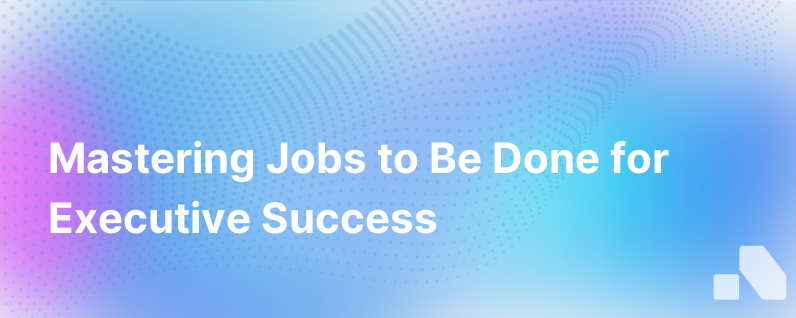
In an era where competition is just a click away, understanding your customers has never been more important. To compete effectively, companies must develop a thorough understanding of what their customers want. That’s where the "Jobs to Be Done" (JTBD) framework comes into play.
The Jobs to Be Done theory was popularized by Harvard Business School Professor Clayton Christensen. It's a consumer-focused approach that helps businesses understand why customers "hire" products or services. The theory proposes that customers are not primarily buying products or services; they are hiring them to perform a specific job.
This article will delve deeper into what the Jobs to Be Done framework entails, why it’s pivotal for successful innovation, and how your business can leverage it to create compelling products or services.
What is Jobs to Be Done (JTBD)?
The framework challenges the traditional method of defining customer needs based on demographic profiles or product characteristics. Instead, the JTBD theory stipulates that consumers are not as interested in the features of a product/service as they are in the jobs these products/services can perform.
Essentially, every decision a customer makes is aimed at resolving a particular problem or completing a particular task. By understanding what job a customer is 'hiring' a product or service to do, a business can better tailor its offerings to the customer's needs.
Jobs can be functional (accomplishing a task), emotional (feelings before, during, or after task completion), or social (how customers believe they are viewed by others). By understanding all three facets, you can create a complete picture of your customer's needs.
Why is the JTBD Framework Crucial for Innovation?
Understanding the jobs that customers are trying to complete can unlock innovation. It enables you to view your product or service from your customer's perspective, helping you uncover less-obvious opportunities for improvement and create better solutions for customers' unmet needs.
The JTBD approach frames markets around the customer's job-to-be-done, not around the offering. This way, it goes beyond incremental improvement and enables truly disruptive innovation.
Applying the JTBD Framework
The first step in applying the JTBD framework is identifying the jobs your customers want to be done. This can be done through various methods, such as customer interviews or surveys, and observational techniques.
After identifying the jobs, the next step is unearthing the desired outcome. You should consider what the 'perfect' completion of the job would look like for the customer. This clarity will inform how you could tailor your offering to meet that ideal.
Example of JTBD in Action
Consider Netflix. The 'job' that customers hire Netflix to do isn't just to stream movies and TV shows. The actual 'job' could be to escape from reality, to relax after a long day, or to learn something new. By understanding these jobs, Netflix can make better decisions about the kind of content to produce and how to deliver it.
The true power of JTBD thinking lies in its ability to break the myopic focus on just improving product features and instead emphasize fulfilling the customers' needs. It is not just about making a better streaming service; it's about creating a better way to relax, escape, or learn.
The Role of AI in Unlocking JTBD
As businesses scale, applying the JTBD framework can be complex. Unstructured data from customer interviews, social media comments, and CRM notes need to be analyzed to identify patterns and insights.
Here, AI can play a substantial role. Aomni, an AI platform for B2B sales, speeds up the process by aggregating and synthesizing data. It helps generate hypotheses about what jobs customers are trying to get done, and continually refines these hypotheses based on human feedback and new data. It’s a far more efficient way of understanding customer needs and fulfilling them.
Conclusion
Uncovering the 'job' that customers hire your product or service for can be illuminating and strategic. It's not about the product or service you sell, but the job it does for your customer. Once you view your offering through that lens, you can innovate far more effectively.
The Jobs to Be Done framework is a powerful tool in any business's toolkit. It helps you focus squarely on your customer's needs and foster innovation that truly adds value. With platforms like Aomni, you can implement the framework seamlessly, gaining crucial insights efficiently, and staying ahead in the competitive landscape.